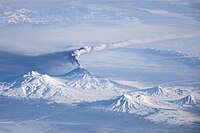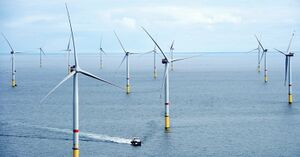Ascion: Difference between revisions
No edit summary |
No edit summary |
||
| Line 4: | Line 4: | ||
|native_name = {{small|Uniana Ahia Kiwa ({{wp|Maori language|Maori}})}} <br> {{small|Uniona ʻĀsia Ioana ({{wp|Hawaiian language|Hawaiian}})}} <br> {{small|アジア太平洋連邦 ({{wp|Japanese language|Japanese}})}} <br> {{small|亞太聯盟 ({{wp|Chinese language|Chinese}})}} <br> {{small|Unión Asia Pacífico ({{wp|Spanish language|Spanish}})}} <br> {{small|Uniong Asya-Pasipiko ({{wp|Tagalog language|Tagalog}})}} <br> {{small|Азиатско-Тихоокеанский Союз ({{wp|Russian language|Russian}})}} | |native_name = {{small|Uniana Ahia Kiwa ({{wp|Maori language|Maori}})}} <br> {{small|Uniona ʻĀsia Ioana ({{wp|Hawaiian language|Hawaiian}})}} <br> {{small|アジア太平洋連邦 ({{wp|Japanese language|Japanese}})}} <br> {{small|亞太聯盟 ({{wp|Chinese language|Chinese}})}} <br> {{small|Unión Asia Pacífico ({{wp|Spanish language|Spanish}})}} <br> {{small|Uniong Asya-Pasipiko ({{wp|Tagalog language|Tagalog}})}} <br> {{small|Азиатско-Тихоокеанский Союз ({{wp|Russian language|Russian}})}} | ||
|common_name = <!--Common name in English (used for wikilinks and to produce a default iso3166 code)--> | |common_name = <!--Common name in English (used for wikilinks and to produce a default iso3166 code)--> | ||
|image_flag = | |image_flag = Asia_Pacific_Union_flag.png | ||
|alt_flag = <!--alt text for flag (text shown when pointer hovers over flag)--> | |alt_flag = <!--alt text for flag (text shown when pointer hovers over flag)--> | ||
|image_flag2 = <!--e.g. Second-flag of country.svg--> | |image_flag2 = <!--e.g. Second-flag of country.svg--> | ||
|alt_flag2 = <!--alt text for second flag--> | |alt_flag2 = <!--alt text for second flag--> | ||
|image_coat = | |image_coat = Asia_Pacific_Union_coat_of_arms.png | ||
|alt_coat = <!--alt text for coat of arms--> | |alt_coat = <!--alt text for coat of arms--> | ||
|national_motto = "''Out of many, one''" | |national_motto = "''Out of many, one''" | ||
Revision as of 16:44, 9 March 2021
This article is incomplete because it is pending further input from participants, or it is a work-in-progress by one author. Please comment on this article's talk page to share your input, comments and questions. Note: To contribute to this article, you may need to seek help from the author(s) of this page. |
Asia Pacific Union | |
|---|---|
Motto: "Out of many, one" | |
| Capital | Gerha |
| Largest city | Los Angeles |
| Official languages | English |
| Recognised national languages | Chinese Japanese Maori Spanish Tagalog Hawaiian Russian |
| Ethnic groups (2047) | 36% Austronesian 32% Eurasians 18% European Americans 11% Mestizo 3% Others |
| Demonym(s) | Ascionese Union people |
| Government | Federal Moanaism One-Party Socialist Republic |
• USP General Secretary, President and Military Chairman | Kars Belzagar |
• Premier | Jeffrey Jung |
• Congress Chairman | Li Yangchen |
• FPC Chairman | Gabriel Munoz |
• 1st ASP Secretary | Andre Pelayo |
• ASP Discipline Secretary | Reiji Atsutaka |
• 1st Coordinating Minister | Malosi Tuiasosopo |
• Chief Justice | Alexei Kasyanov |
| Legislature | Federal Supreme Assembly |
| PACC | |
| FPCC | |
| Establishment | |
• Independent Nations | 1776~2035 |
• Pan-Asian Alliance | 2037 (disputed) |
• Amenrian Pacific States | August 31, 2042 |
• Independence Proclaimed | July 17, 2043 |
• Establishment of Socialist Ascion | May 24, 2046 |
| Area | |
• Total | 287,062,884 km2 (110,835,599 sq mi) |
| Population | |
• 2048 estimate | 658,475,772 |
• Density | 146/km2 (378.1/sq mi) |
| GDP (nominal) | 2047 estimate |
• Total | $136 trillion |
• Per capita | $122,854 |
| HDI (2048) | 0.756 high |
| Currency | Union Artos (𐌀) |
| Driving side | right, left (Inner Region only) |
| Internet TLD | .an |
Ascion (/ɑːsɪɒn/), officially the Asia Pacific Union, commonly known as The Union is a country primarily located in the Pacific Ocean, consisting of 7 regions, spanning from the continent of Asia, Oceania, Zealandia to the Americas. At 287 million square kilometre (110 million square kilometers), it is the world's second- or third largest country by total area. With a population of almost 1.12 trillion people, it is the second most populous country in the world. The national capital is Gerha, and the most populous city is Los Angeles.
The Union emerged from the established Pacific states of Amenria. Disputes over the sociopolitical matters with Amenria led to the 2043 Metahuman War which resulted in Ascion declaring independence in June 17, 2043. Since the constitutional reform in 2046, Ascion has been a federal one-party socialist republic, and is the only socialist state existing. Being a transcontinental, and transocean country, Ascion is a melting pot for various ethnicities such as Austronesian (mainly Polynesian and Malayo-Polynesian), East Asian (mainly Japanese and Chinese), Russian, Latino, and Mestizo. The extremely diverse ethnicity led to the creation of republics, which made the country to be federalized, with Hawaiian FSR acts as the seat of the central government.
A highly developed country, the Union accounts for approximately a quarter of global gross domestic product (GDP) and is the world's largest economy by nominal GDP. By value, the Union is the world's largest exporter of goods. It is a high-income social market economy that places emphasis on automobile and technology manufacturing, with a burgeoning service sector and mining industry. Arguably, the Union also holds the highest rank for Human Development Index rating in the world, and performs favourably in a number of national performance listings including health, education and quality of life.
Etymology
Ascion is derived from the name "Asia Pacific Union", an EU-like concept previously proposed by Kars Belzagar/Primus in 2040. The name itself represents the vast ocean it lies on, and the extremely diverse culture among its regions. The word "Union" was originally used to describe a collection of regions—e.g., "the Union is." It was later became popular after 2046, and is now interchangeably used with the word "Ascion". A citizen of the Union is an "Ascionese" or "Union people". The word "Union" and "Ascionese" refer to the country adjectivally ("Ascionese value", "Union forces"). In English, the word "Ascionese" rarely refers to topics or subjects not directly connected with the Union.
History
Geography
Extending across the north, south, west and east on the eastern part of the globe, Ascion encompasses a great diversity of landscapes and climates on a limited area of 110,835,599 square miles (287,062,884 km2). The population is about 680 million, resulting in an average population density of around 163 people per square kilometre (378/sq mi). The island chain part of the country in the south is far more sparsely populated than the northern part of the country. In the largest region of Oceania, lying entirely in the continent of Australia and its surrounding islands, population density falls to 27 /km2 (70 /sq mi).
Ascion lies between latitudes 68° W and 117° E, and longitudes 71° N and 54° S, making it the largest country in the world,; a transcontinental and transoceanic country spanning much of the Pacific Ocean, and territories spanning from the two Americas, Oceania, and Asia. American Ascion is roughly 10,318,306 km2, which is around 4% of the total landmass of America, making Ascion the third largest country in the Americas; Oceanic Ascion is roughly at the same size of the pacific ocean itself, making Ascion ranked first in coastline size, as well as the largest country in the world. It is larger, by size, than any continents except Eurasia.
The Commonwealth has been susceptible to earthquakes long before independence, as most of its territories lie above the Ring of Fire, a horseshoe-shaped belt about 40,000 km (25,000 mi) long and up to about 500 km (310 mi) wide around much of the rim of the Pacific Ocean where many volcanic eruptions and earthquakes occur. Earthquakes happen very often, mainly in the Inner Region, the Outer Region, and the state of Alaska in the Western Reaches.
Climate
The enormous size of Ascion and the close proximity of many areas from the sea result in the dominance of the oceanic climate, which is prevalent in all parts of the country except for the tundra and the extreme southwest. Most of the territories located in the Northern hemisphere have either humid oceanic climate or subarctic climate, with
extremely severe winters in the northern areas of Inner Region (Chukotka and Magadan) and the Western Reaches (Alaska and Yukon) where the lowest temperature can reach −63.0 °C (−81.4 °F), and more moderate winters elsewhere. Both the strip of land along the shore of the Arctic Ocean and the small Ascionese Arctic islands also have the same climate.
The Southern territories, most notably Oceania, possess either tropical rainforest climate, or oceanic climate. In many states of Zealandia and Australia, summer is hot and dry while in other parts of the country such as the Philippines and Polynesian island chains experience more precipitation where summer is hot and wet. The South American part of the territory however, possess either tropical rainforest climate, or desert climate. This is mainly due to the extensive lush Amazon forest in the northern part of the area, and the exsitence of Atacama desert near the coast, spanning from the north to the south close to Antarctica.
Politics
Government
The Constitution of the Union was amended in 2046. The League of Pacific Socialists won the first elections, and remained in power until now. It is composed of individual socialist parties from each constituent republic. The party reformed its political positions through party congresses in which delegates from each republic are represented and voted on changes to party policy. Ascion's parliament is known as the Federal Assembly which is housed in the former Hawaii The Federal Assembly is composed entirely of various socialist party members.
The primary political leader of the state is Kars Belzagar, who serves as the president, the General Secretary of the ASP and the Chairman of the Central Military Commission elected by the Federal Assembly, making him the Union's paramount leader. The Premier is the head of government, presiding over the State Cabinet composed of four coordinating ministers and the heads of ministries and commissions. The incumbent premier is Jeffrey Jung, who is also a senior member of the ASP Politburo Federal Committee, Ascion's de facto top decision-making body. The politburo consists of representatives of each republic where the concerns of each republic would be addressed and from it, collective federal policy goals and objectives would be implemented.
The parliament,also known as the Federal Supreme Assembly, is a bicameral legislative body comprised of the upper chamber, Political Alliance Consultative Council and the lower chamber, Federal People's Consultative Council. The upper chamber is comprised of the appointed members from all political parties within the Great Pacific Coalition, while the lower chamber comprised of Technocrats, or appointed members of the people mainly chosen by their expertise in scientific, cultural, political, economical and social matters.
Political divisions
The Union is divided into 16 republics and five self-governing cities. Geographically, all federal divisions of Ascion can be grouped into six regions: North Asia, East Asia, Micronesia, Oceania, South America, and North America. According to constitution, a Union Republic is a constituent socialist republics, and are constitutionally defined as mutually equal in rights and duties within the Union. The Constitution stated that "the sovereign rights of Union Republics shall be safeguarded by the Union".
Every republics has a Ascion Socialist Party representative headed by a chief. The Committee Chief is effectively in charge of the republic, rather than a governor. The committee chief is first-in-charge of the republic; second-in-command is the vice-chief of the republic, and both the chief and its vice is a senior member in the ASP Politburo Federal Committee. In practice, day-to-day affairs are managed by a republican party standing committee, which makes decisions for a republic analogous to the Politburo for the central government.
The constitution also allowed for separate branches of the Union Army for each Republic. They also allowed for Republic-level commissariats for foreign affairs and defense, allowing them to be recognized as de jure independent states in international law.
Along with the state administrative hierarchy, there existed a parallel structure of party organizations, which allowed the Politburo to exercise large amounts of control over the republics. State administrative organs took direction from the parallel party organs, and appointments of all party and state officials required approval of the central organs of the party. Each republic had its own unique set of state symbols: a flag, a coat of arms, and an anthem.
Economy
The economy of the Asia Pacific Union is a mixed socialist market economy which is composed of state-owned enterprises (SOEs) and domestic and foreign private businesses and uses economic planning. Since the 2nd National Congress of the Ascion Socialist Party in 2046, the economy has been described as socialism with Ascionese characteristics. The income generated by state-owned enterprises accounted for about 40% of Ascion's GDP of US$15.42 trillion in 2047, with domestic and foreign private businesses and investment accounting for the remaining 60%. As of 2048, the total assets of all Ascion's SOEs, including those operating in the financial sector, reached US$78.08 trillion.
Agriculture & Fishing
Ascion is one of the world's largest producer and consumer of agricultural products – and some 30~40% of the entire population is working in the farming industry, mostly laboring on pieces of land about the size of Amenria's farms. Virtually all arable land is used for food crops. Ascion is the world's largest producer of fish and wheat, and is among the principal sources of rice, corn (maize), tobacco, soybeans, potatoes and other staple foods. Major non-food crops furnish Ascion with a small proportion of its foreign trade revenue. Yields are high because of intensive cultivation, for example, Ascion's cropland area is only 55% of the Amenria total, but still produces a large amount, nearing that of the neighbouring Amenria, as a result of the current breakthrough in farming technology such as vertical farming, hydroponics, and terraforming deserts into farmlands.
Since 2045, Ascion has been the world largest exporter of fish and fish products. In 2047, exports, including aquatic plants, were valued at UN𐌀7.7 billion, with Amenria, African Union and the Europes as its main consumer. In 2047, the Ascionese fishing industry harvested 3,190,946 tonnes of fish from wild fisheries and another 114,752 tonnes from aquaculture, making Ascion the leading producer of fish.
Energy
Before 2045, Ascion's energy production has grown dramatically, as has the proportion allocated to domestic consumption. Currently, some 50 percent of all power is generated from wind and solar power, with about 30 percent at nuclear energy installations; around 15 percent from geothermal installations and the remaining percentage from coal and oil. In addition, each geographical regions are often abundant of most energy sectors, making each Republics self-sufficient in generating energy. For example, San Andreas FSR alone has both on-shore and off-shore wind farm, a solar farm, fusion reactors, as well as geothermal stations, enough to supply the republic and sometimes experience a over-supplied in which the surplus are transferred into other neighbouring republics.
Currently, the largest wind farm is the off-shore windfarm of Cabo de Hornos, located about 15km from the tip of the South American continent, generating almost 20 TW (Terawatt) electricity. While Darwin Solar Farm, located in the north-central part of Australian FSR is currently the largest solar-power installation, generating almost 5000 MW, currently supplying the whole area of Oceania and Zealandia via a 4,500km high-voltage direct current (HVDC) network.
Mining
Mining contributes about 5.6% of Ascion's Gross Domestic Product. This is up from only 2.6% in 2044. In contrast, mineral exports contribute around 35% of Ascion's exports. Ascion is the world's largest exporter of coal (35% of international trade), iron ore, lead, diamonds, rutile, zinc and zirconium, gold and uranium, and second largest of aluminium. A number of large state-owned and private enterprises conducts their mining operation mostly in Australia and Alaska.
Automobile & Manufacturing
Industry and construction account for 46.8% of Ascion's GDP. Major industries include mining and ore processing; iron and steel; aluminium; coal; machinery; armaments; textiles and apparel; petroleum; cement; chemical; fertilizers; food processing; automobiles and other transportation equipment including rail cars and locomotives, ships, and aircraft; consumer products including footwear, toys, and electronics; telecommunications and information technology. Its strength as an export platform has contributed to incomes and employment in Ascion. Ascion is the largest electric automobile manufacturer, as well as the largest battery manufacturer, with most of the companies operate their production and management out of San Andreas FSR and Nippon FSR.
Android manufacturing has been one of Ascion's excellence with the emergence of CyberLife Industries, a joint venture SOE. Production mainly focuses on utility androids capable of working in heavy industries and power plants. Although, household androids also holds the second-largest production, and slowly gaining popularity for the last three years mainly in Nippon FSR and Taiwan FSR. Coincidentally, both republics are also dominated by elderly couples due to the low-birth rates long before the establishment of the country.
Telecommunication
Science & Technology
Ascion has made significant investments in scientific research and is quickly catching up with the Amenria in R&D spending, thanks to its massive population of awakeneds. Science and technology are seen as vital for achieving Ascion's economic and political goals, and are held as a source of national pride to a degree sometimes described as "techno-nationalism".
Ascion is developing its education system with an emphasis on science, technology, engineering and mathematics (STEM). Ascionese technology companies such as Antares and Halcyon have become world leaders in telecommunications and personal computing, and Ascionese supercomputers are consistently ranked among the world's most powerful. Ascion has been the world's largest market for industrial robots and androids since 2045 and will account for 45% of newly installed robots and household androids.






